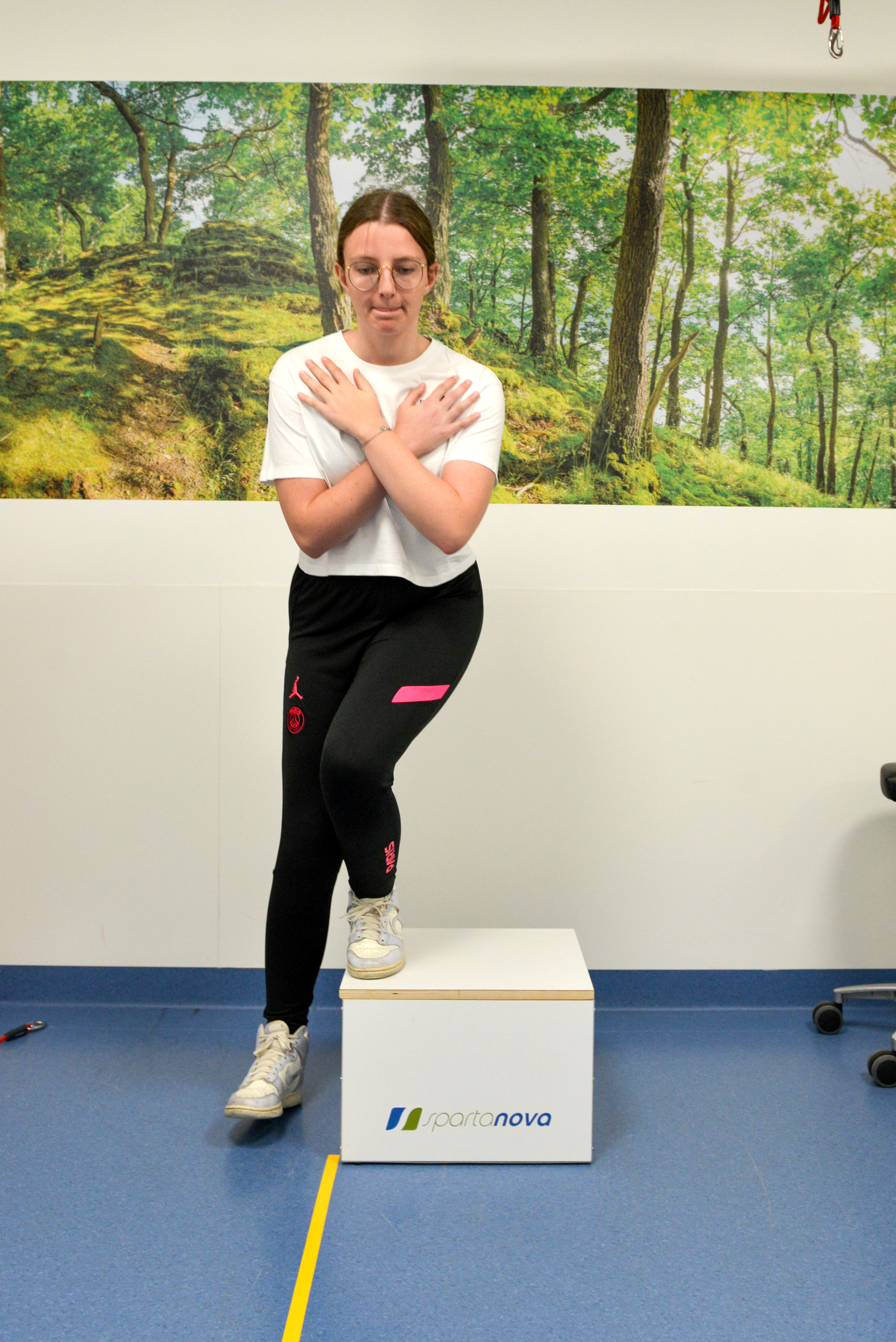Rehabilitation after anterior cruciate ligament repair
What is it?
What is it?After anterior cruciate ligament (ACL) repair, you can undergo rehabilitation at our Outpatient Rehabilitation Department.
Physiotherapist's exercises
Physical therapy may be initiated as early as two days post surgery. Strict adherence to the prescription from the attending physician is required.
- Gradual bending of the knee without resistance up to 120°.
- Bending of the knee without a brace to 90°.
- Exercises on the home trainer without resistance.
Do the exercises regularly. However, it is very important that this is completed without pain.
Exercises to do on your own
- Circle your feet.
- Exercise and stretch your calf muscles
- Tighten your upper leg muscle and lift your extended leg
- Stretch and bend your knee while staying/sliding on a fixed lower surface here. You can lie down on your bed for this, for example.
- Regularly extend your knee fully, but do not force anything in the process.
Steps
Follow your attending physician's advice regarding the steps.
Further follow-up via our Sports Medicine Centre
Further follow-up via our Sports Medicine CentreFor optimal rehabilitation, the Sports Medicine Centre of Maria Middelares General Hospital offers the opportunity to have your knee evaluated three, six and eight months after your surgery.
After anterior cruciate ligament repair surgery, everyone wants to regain optimal function as soon as possible.
Your knee's mobility, strength and functionality will be objectively assessed through a range of examinations. This will show whether you are ready for the next step in your rehabilitation and which points can still be worked on. This allows us to provide information about when you might consider resuming your sports activities and provide feedback to the physiotherapist through a personalised report.
Depending on the period after surgery, a Hylyght test and/or a Biodex test will be administered.

Hylyght test
In this comprehensive test, our physical therapists examine your strength, agility, coordination and stability to identify any 'physical weak links'. This involves looking beyond the local problem. A recurring knee injury can, for example, be caused by weak pelvic control, limited hip mobility or poor ankle stability.
The Hylyght test is supported by the latest scientific findings. You will receive tips to elevate your performance while reducing the risk of a new injury.
Biodex test
The Biodex measurement is an objective and reliable strength test. Based on the measurements, significant strength disparities can be identified, your progress during rehabilitation can be documented and your training can be adjusted.
It is important to maintain a balance in strength between the operated and non-operated sides. The muscle strength ratio between the front and back of the upper leg, as well as the ratio between the left and right leg, is also crucial for a proper recovery.
Practical aspects
Practical aspectsAfter your surgery, make an appointment for a test after three and six months; respectively, through the secretariat of the Physical Medicine and Rehabilitation Department. The results will then be discussed with a Sports Medicine physician. If it turns out that the test was insufficient after six months, we recommend an additional test after eight months.
Prices and location
A Hylyght test costs €75.00 and is conducted at the Ghent-Bruges Medical Centre
A Biodex test costs €120.00 and is performed at Maria Middelares General Hospital
Physical Medicine Secretariat
Tel +32 9 246 85 00
Centres and specialist areas
Centres and specialist areasLatest publication date: 16/05/2024



